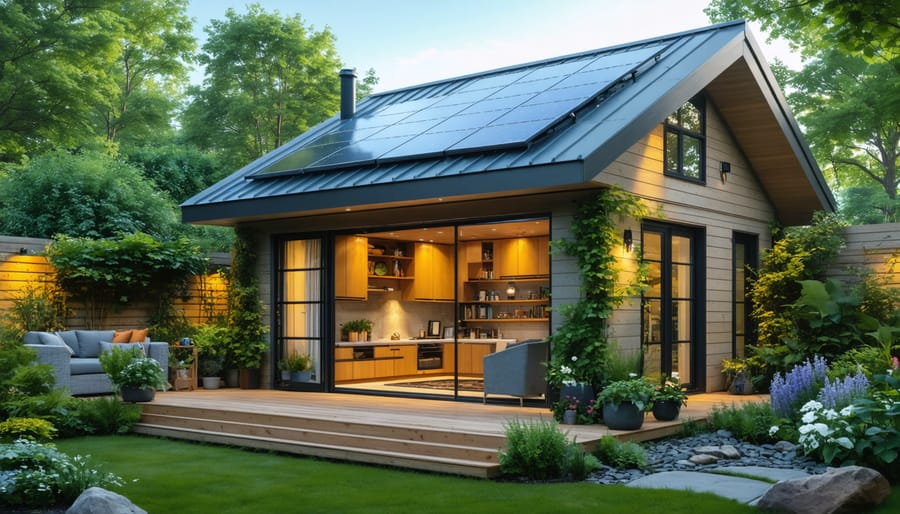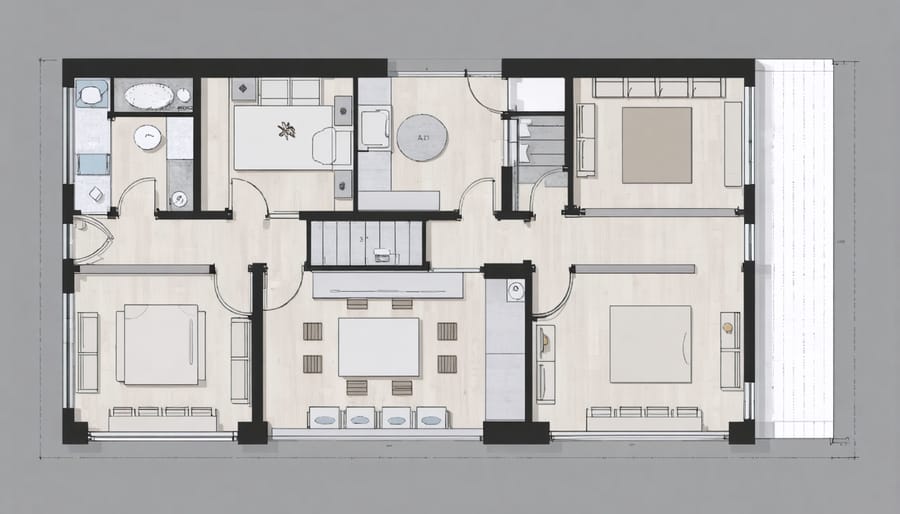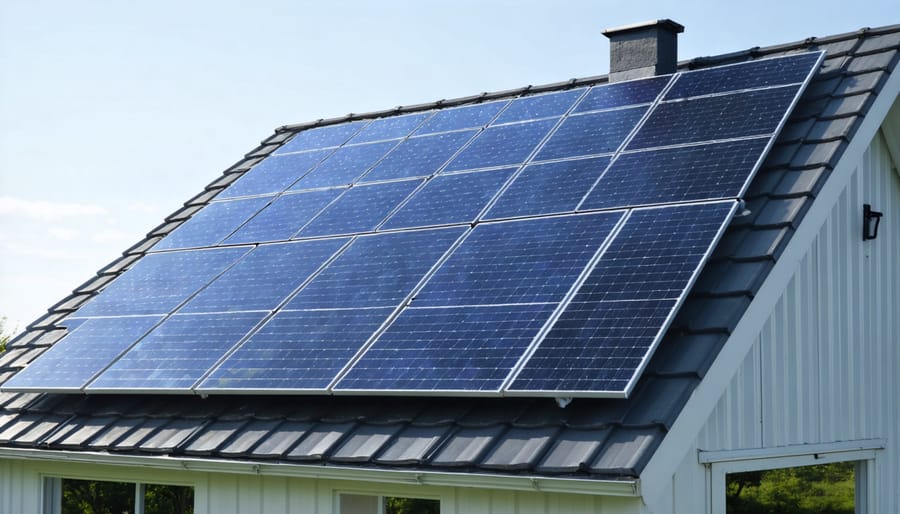Beautiful 2 Story Sheds That Save Energy (And Your Wallet)

Transform your backyard space into a versatile storage and workspace solution with a two-story shed design that maximizes vertical space while minimizing environmental impact. Modern double-story sheds offer more than just extra storage – they serve as home offices, workshops, garden retreats, or even potential rental spaces. By incorporating sustainable materials and smart design principles, these structures blend seamlessly with your property while providing double the functionality of traditional single-story options.
Today’s eco-conscious homeowners are discovering that two-story shed designs deliver exceptional value per square foot, especially in areas with limited yard space. Whether you’re planning a DIY project or working with a professional contractor, thoughtful design elements like natural lighting, proper insulation, and renewable materials ensure your structure remains both practical and environmentally responsible. From compact 10×12 footprints to expansive 16×24 designs, these versatile buildings adapt to your specific needs while maintaining a modest environmental footprint.
Let’s explore the essential elements of two-story shed design, from foundation considerations to innovative storage solutions that maximize every inch of vertical space.
Smart Design Features for Eco-Friendly 2 Story Sheds
Natural Lighting Solutions
Natural lighting can transform your two-story shed into a bright, energy-efficient space while reducing your reliance on artificial lighting. Strategically placed windows on both levels not only illuminate your workspace but also help regulate temperature throughout the seasons. Double-hung windows are particularly effective, allowing you to control airflow while maximizing natural light penetration.
Skylights are a game-changer for upper-level lighting, especially in larger sheds. Install them on the north-facing roof section to avoid direct sunlight that could overheat the space in summer. For areas where traditional skylights aren’t practical, solar tubes offer an excellent alternative. These innovative devices capture sunlight through a dome on the roof and channel it down through a reflective tube, brightening even the darkest corners of your lower level.
Consider placing clerestory windows high on the walls to draw in additional light while maintaining privacy and wall space for storage. For the best results, combine different lighting solutions – perhaps skylights upstairs with solar tubes downstairs – to create a well-lit environment that’s both functional and energy-efficient. Remember to position your workbench or hobby area near natural light sources to reduce eye strain and create a more pleasant workspace.

Sustainable Materials
When building your two-story shed, choosing eco-friendly building materials can significantly reduce your environmental footprint while creating a durable structure. Consider reclaimed wood from local demolition projects or sustainably harvested timber certified by the Forest Stewardship Council (FSC). Bamboo flooring offers an excellent renewable alternative to traditional hardwood, growing to maturity in just 5-7 years.
Metal roofing made from recycled materials not only provides excellent durability but also reflects sunlight, helping regulate temperature inside your shed. For insulation, look into options like recycled denim or sheep’s wool, which offer superior thermal performance without harmful chemicals.
Local sourcing plays a crucial role in sustainability. Work with nearby suppliers to source stone, gravel, and other materials, reducing transportation emissions while supporting your local economy. Many manufacturers now offer siding made from recycled plastic and wood composites, providing weather resistance and minimal maintenance requirements while keeping plastics out of landfills.
Remember to consider salvaged materials like windows, doors, and hardware – they add character while reducing waste and often cost less than new materials.
Energy-Efficient Insulation
Proper insulation is key to making your two-story shed both comfortable and energy-efficient. Modern eco-friendly options like recycled denim, sheep’s wool, and cellulose insulation offer excellent thermal performance while reducing environmental impact. These materials not only maintain consistent temperatures year-round but also provide superior sound dampening properties. Consider installing a radiant barrier in your shed’s roof to reflect heat during summer months, cutting cooling costs significantly. The initial investment in quality insulation typically pays for itself within 2-3 years through reduced energy bills. For maximum efficiency, combine insulation with proper ventilation and weather stripping around doors and windows. This comprehensive approach ensures your shed stays comfortable in all seasons while minimizing your carbon footprint.

Space-Maximizing Floor Plans
First Floor Organization
The ground floor of your two-story shed serves as the foundation for your storage system, making it crucial to maximize storage space through thoughtful organization. Start by dividing the floor into distinct zones: one for frequently accessed items, another for seasonal equipment, and a dedicated workspace if needed.
Consider installing adjustable shelving units along the walls, leaving the center area clear for larger equipment like lawn mowers or workbenches. Mobile storage solutions, such as rolling tool carts and bins on casters, offer flexibility and easy access to frequently used items. Pegboards and wall-mounted organizers keep tools visible and within reach while freeing up valuable floor space.
For optimal functionality, position your heaviest items closest to the entrance and create clear pathways between storage zones. Installing good lighting is essential, as it helps you locate items quickly and makes the space more user-friendly. Consider adding motion-sensor LED lights to conserve energy while maintaining visibility.
Don’t forget vertical storage opportunities – the space between floor joists can accommodate longer items like lumber or pipes. Installing hooks and brackets on support posts provides additional hanging storage for garden tools and equipment. If you’re planning a workspace, position it near windows or doors for natural light and ventilation.
Remember to leave enough clearance around doors and stairs leading to the second floor. This ensures safe movement and easy access to items stored on both levels. By implementing these organization strategies, you’ll create an efficient ground floor that serves as a solid foundation for your two-story shed’s storage system.
Second Floor Possibilities
The second floor of your two-story shed opens up a world of possibilities for creating functional and inspiring spaces. Many homeowners transform their upper level into a dedicated home office, providing a quiet retreat away from household distractions. With proper insulation and windows, this workspace can be comfortable year-round while offering scenic views of your property.
Crafters and artists particularly appreciate the natural lighting that a second-floor studio provides. The elevated position allows for optimal daylight exposure, perfect for detailed work or creative projects. Consider installing skylights to enhance the natural illumination even further.
For those who enjoy staying active, the upper floor can become a private workout space or yoga studio. The separation from the ground floor storage area helps maintain a clean, peaceful environment for exercise. Add mirrors, proper ventilation, and rubber flooring to create the perfect home gym setup.
Another popular option is converting the space into a hobby room or workshop for activities that require a dust-free environment. Model builders, collectors, and electronics enthusiasts can benefit from this protected upper-level sanctuary. Built-in shelving and workbenches can maximize the available space while keeping projects organized.
Some homeowners opt to create a relaxation zone, complete with comfortable seating, a small library, or even a meditation area. This quiet retreat can serve as a perfect getaway without leaving your property. With proper planning, you can even include a small kitchenette or refreshment station to make the space more self-contained and convenient.
Remember to consider proper lighting, ventilation, and access when planning your second-floor space. A sturdy staircase and adequate headroom are essential for comfortable daily use.
Green Technology Integration
Solar Power Systems
Incorporating solar power into your two-story shed design not only reduces your environmental footprint but can also lead to significant energy savings. The elevated height of a two-story structure provides an ideal platform for solar panel installation, maximizing sun exposure throughout the day.
Consider installing panels on the south-facing roof slope to capture optimal sunlight. Most residential solar systems require 200-400 square feet of roof space, making a two-story shed’s roof area perfect for a modest solar array. For effective energy storage, dedicate a small corner of your ground floor to house deep-cycle batteries and inverters, keeping them protected from the elements while maintaining easy access for maintenance.
To maximize efficiency, incorporate LED lighting fixtures and energy-efficient outlets throughout both floors. Many homeowners find that a 2-4 kW system adequately powers workshop tools, lighting, and small appliances while providing surplus energy for the main house during peak production hours.
Remember to factor in proper ventilation around your battery storage area and include a monitoring system to track energy production and consumption. This setup not only makes your shed self-sufficient but can also serve as a backup power source during outages, adding another layer of functionality to your two-story shed design.

Smart Climate Control
Maintaining a comfortable temperature in your two-story shed requires a smart approach to climate control. By implementing energy-efficient systems, you can create a pleasant environment while keeping utility costs in check.
Start with proper insulation in both floors and walls, using eco-friendly materials like recycled denim or sheep’s wool. This foundation helps maintain consistent temperatures year-round. Installing double-pane windows with low-E coating reduces heat transfer and keeps your shed cooler in summer and warmer in winter.
For active climate control, consider a mini-split system that allows independent temperature control for each floor. These systems are incredibly efficient and can be powered by solar panels, making them an environmentally conscious choice. Ceiling fans on both levels help circulate air and reduce the workload on your cooling system.
Natural ventilation plays a crucial role too. Strategic placement of windows and vents creates cross-ventilation, while a solar-powered attic fan helps expel hot air from the upper level. For additional temperature regulation, consider installing programmable thermostats that adjust based on your usage patterns.
During winter months, radiant floor heating provides efficient warmth from the ground up. This system works particularly well in two-story structures as heat naturally rises to warm the upper level. Combined with proper sealing around doors and windows, these climate control solutions ensure year-round comfort while minimizing energy consumption.
Water Management Features
Rainwater Collection
A two-story shed design offers excellent opportunities for implementing efficient rainwater collection systems that can significantly reduce your water bills and support sustainable gardening practices. The elevated height of your shed’s roof creates ideal conditions for gravity-fed water collection, allowing you to store harvested rainwater on both levels.
Consider installing gutters along both sides of your roof that feed into downspouts connected to storage tanks. The upper level can house a primary collection tank, while the ground level can accommodate a larger storage reservoir. This dual-tank setup maximizes your water storage capacity while maintaining proper water pressure for various uses.
For optimal efficiency, install a first-flush diverter to filter out debris and contaminants before water enters your storage system. You can use the collected water for garden irrigation, cleaning tools, or washing your vehicles. Adding a simple filtration system and pump will expand your usage options, making your two-story shed an eco-friendly water management hub.
Greywater Systems
A greywater system can transform your two-story shed into an eco-friendly powerhouse by recycling water from sinks, showers, and washing machines. Installing a basic greywater collection system on your upper floor allows gravity to naturally distribute recycled water to ground-level gardens and landscaping. Consider adding a 50-gallon collection tank in the upper story, connected to filtration systems that remove soaps and debris before releasing the water for irrigation.
For workshop sinks or utility stations in your shed, direct the drainage into storage tanks with simple biological filtration using gravel and aquatic plants. This filtered water is perfect for watering indoor plants or cleaning outdoor equipment. Many shed owners install rain barrels at downspouts to complement their greywater system, creating a comprehensive water conservation solution.
Remember to check local regulations regarding greywater systems before installation. Using eco-friendly, biodegradable soaps and cleaners will ensure your recycled water is safe for plants and soil. With proper planning, your greywater system can reduce water consumption by up to 30% while keeping your garden thriving year-round.
As we’ve explored throughout this guide, eco-friendly two-story shed designs offer an impressive combination of sustainability and practicality that makes them an excellent investment for any property. These innovative structures not only maximize vertical space but also contribute to environmental conservation through thoughtful design and materials.
By incorporating sustainable features like solar panels, rainwater collection systems, and natural lighting, these sheds reduce both your carbon footprint and utility costs over time. The use of recycled and renewable materials ensures durability while minimizing environmental impact, making these structures truly future-proof investments.
The versatility of two-story shed designs cannot be overstated. Whether you’re using the space for storage, a home office, or a combination of purposes, the additional square footage provides flexibility that single-story structures simply can’t match. The ability to adapt these spaces as your needs change makes them particularly valuable for growing families or evolving lifestyle requirements.
Moreover, eco-friendly two-story sheds often increase property value, making them a smart financial decision. Their attractive designs and sustainable features appeal to increasingly environmentally conscious buyers, while their practical benefits make them a desirable feature for any home.
Remember, investing in an eco-friendly two-story shed is more than just adding storage space – it’s a commitment to sustainable living that pays dividends in functionality, environmental impact, and long-term value.

